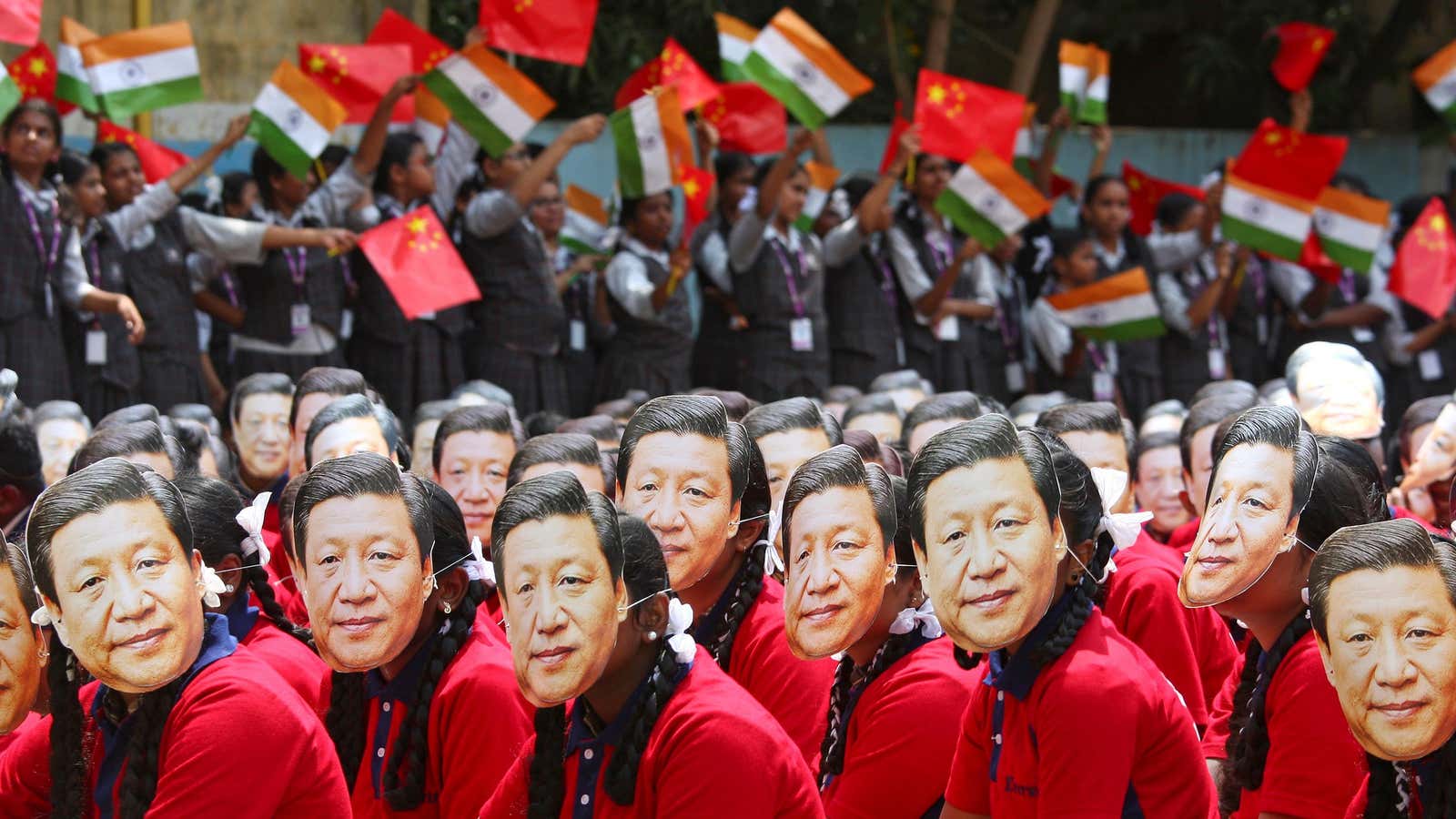Even amidst a campaign to become “self-reliant”, India’s trade deficit with China has soared. And its dependence on China for electronic parts has grown particularly deep.
Between April and August, India imported $12 billion of China-manufactured electronic parts, making up 27% of all imports from China, according to data from India’s commerce ministry. In 2021, India imported $30.26 billion worth of electronic parts from China.
The Indian electronics market, valued roughly at $75 billion in 2021, is projected to grow 6-7% annually for the next six years. But the sector is hobbled by a shortage of locally manufactured components and high import costs. Components aside, India also looks to China to meet its requirements for rare earth minerals, which are used in electronic materials such as magnets. This dependence on Chinese imports has contributed to India’s trade deficit rising to $73.3 billion in 2021-22.
How China maintains its hold over electronics exports
China has dominated the electronics manufacturing sector primarily due to its competitive pricing and favorable government policies. The government offers direct subsidies to manufacturers and credit to state-owned companies at a lower rate.
A report by the Center for Strategic and International Studies (pdf), which analyzed government expenditure on industry in China, South Korea, Brazil, Germany, Japan, Taiwan, and the US, added up direct subsidies, tax incentives, credit, state investment, and other forms of support. “As a share of GDP, China spends over twice as much as South Korea, which is the second-largest relative spender,” the report concluded. “In dollar terms, China spends more than twice as much as the US.”
India, on the other hand, provides far fewer breaks for manufacturers. Compared to China, India provides “lower income tax exemptions and reductions to electronics manufacturers,” a document (pdf) by India’s ministry of electronics and information technology stated in January.
India also has no free trade agreement with major electronics suppliers such as China and the US, which would have reduced import costs significantly.
India’s alternative sources for its electronics or the rare earths they require entail a higher cost of procurement. For example, India could forge trade agreements with African countries for minerals such as lithium, cobalt, nickel, or copper. But even if the cost of raw materials in these countries is lower, high import tariffs and weak chains of supply from Africa to India end up making such imports more expensive.
